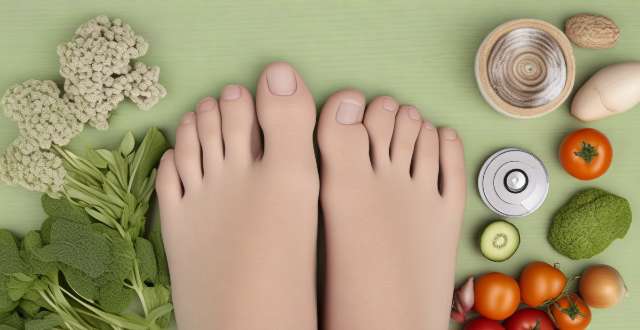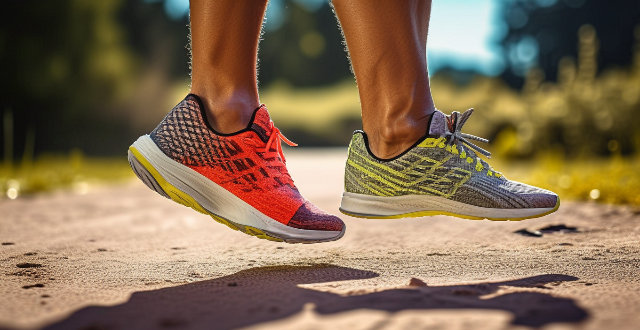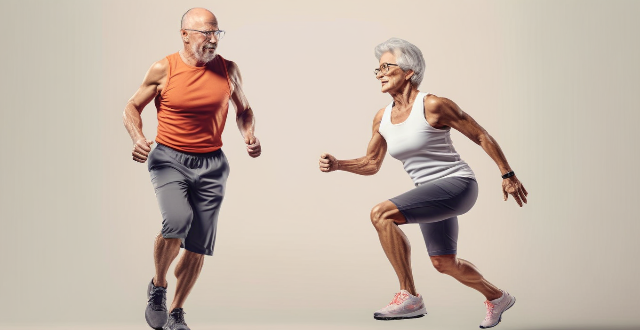Foot Heel

What are the consequences of neglecting foot hygiene ?
The text discusses the various consequences of neglecting foot hygiene, including physical health risks such as athlete's foot, toenail fungus, ingrown toenails, blisters and calluses, plantar warts, smelly feet (bromodosis), corns, bunions, gout, cellulitis, diabetic foot ulcers, deep vein thrombosis (DVT), and peripheral neuropathy. It also addresses mental health impacts like embarrassment and self-consciousness, anxiety, and stress. The text provides detailed descriptions and prevention tips for each issue, emphasizing the importance of good foot care habits to maintain overall foot health.

How important is footwear when it comes to running techniques ?
Footwear plays a crucial role in running techniques, improving performance and reducing the risk of injuries. Proper footwear should provide cushioning, support, fit, comfort, traction, grip, breathability, and durability. To choose the right pair of running shoes, consider your foot type (neutral, flat, or high arches), running style (heel striker, midfoot striker, or forefoot striker), terrain (road or trail), and distance. Try before you buy to ensure proper fit and comfort.

Are there any specific exercises recommended for improving balance and stability in older adults ?
Sure, here are some specific exercises recommended for improving balance and stability in older adults. Tai Chi is a gentle form of exercise that involves slow, flowing movements. It has been shown to improve balance, flexibility, and overall physical function in older adults. Yoga is another great option that combines physical postures, breathing techniques, and meditation to improve strength, flexibility, and balance. Standing on one foot is a simple exercise that can be done anywhere and requires no equipment. Heel-to-toe walk helps improve coordination and balance by walking heel-to-toe in a straight line. Leg lifts help strengthen the muscles around the hips and thighs, which are essential for maintaining good balance. These exercises are just a few examples of how older adults can improve their balance and stability through regular practice.

How do I choose the right shoes for marathon training ?
When it comes to marathon training, having the right pair of shoes is crucial. Not only do they provide comfort and support during long runs, but they also help prevent injuries and improve performance. Here are some key factors to consider when choosing the right shoes for marathon training: - Determine your foot type (flat feet, high arches, or neutral feet) and choose shoes accordingly. - Consider your gait (overpronation, supination, or neutral gait) and select shoes with appropriate features. - Choose the right type of shoe (trainers, racing flats, or trail shoes) based on your training needs. - Get the right fit by ensuring there is enough space in the toe box, the shoe feels snug but not constricting, and the heel fits securely without slipping. - Test before you buy by trying on shoes and considering different brands and models to find the perfect fit for your feet. - Don't skimp on quality by investing in a good quality pair of running shoes from reputable brands known for their durability and performance.

What are some good stretching exercises for after a run ?
After a run, it's important to stretch your muscles to prevent injury and improve flexibility. Here are some good stretching exercises for after a run: - Hamstring Stretch: Sit on the ground with your legs straight out in front of you, reach forward and try to touch your toes without bending your knees, hold for 15-30 seconds and repeat 2-3 times. - Quadriceps Stretch: Stand upright and bend one knee, bringing your heel towards your buttocks, grasp your ankle with one hand and hold onto a stable object with the other hand for balance, pull your foot closer to your buttocks until you feel a stretch in the front of your thigh, hold for 15-30 seconds and repeat 2-3 times on each leg. - Calf Stretch: Stand facing a wall with your hands placed against it at shoulder height, step one foot back behind you, keeping both heels flat on the ground, bend your front knee slightly while keeping your back leg straight, hold for 15-30 seconds and repeat 2-3 times on each leg. - Gluteal Stretch: Sit on the ground with your legs bent and feet flat on the floor, place your right ankle over your left knee, creating a "figure four" shape with your legs, gently push down on your right knee until you feel a stretch in your glutes, hold for 15-30 seconds and repeat 2-3 times on each side.

What are the best stretches for cooling down after a gym session ?
After a gym session, it's crucial to gradually cool down your body. Here are the best stretches for that: hamstring, quadriceps, calf, hip flexor, and back stretches. These exercises help reduce heart rate, lower blood pressure, prevent muscle soreness, improve flexibility, and range of motion. Remember to hold each stretch for at least 30 seconds and avoid bouncing to prevent injury.

How can I select the right pair of ski boots ?
Ski boots are an essential piece of equipment for any skier. Here are some tips to help you choose the perfect ski boots: 1. Determine your skiing ability level. 2. Consider your foot type. 3. Look for proper fit and comfort. 4. Check for proper support and control. 5. Try before you buy. 6. Consider customization options.